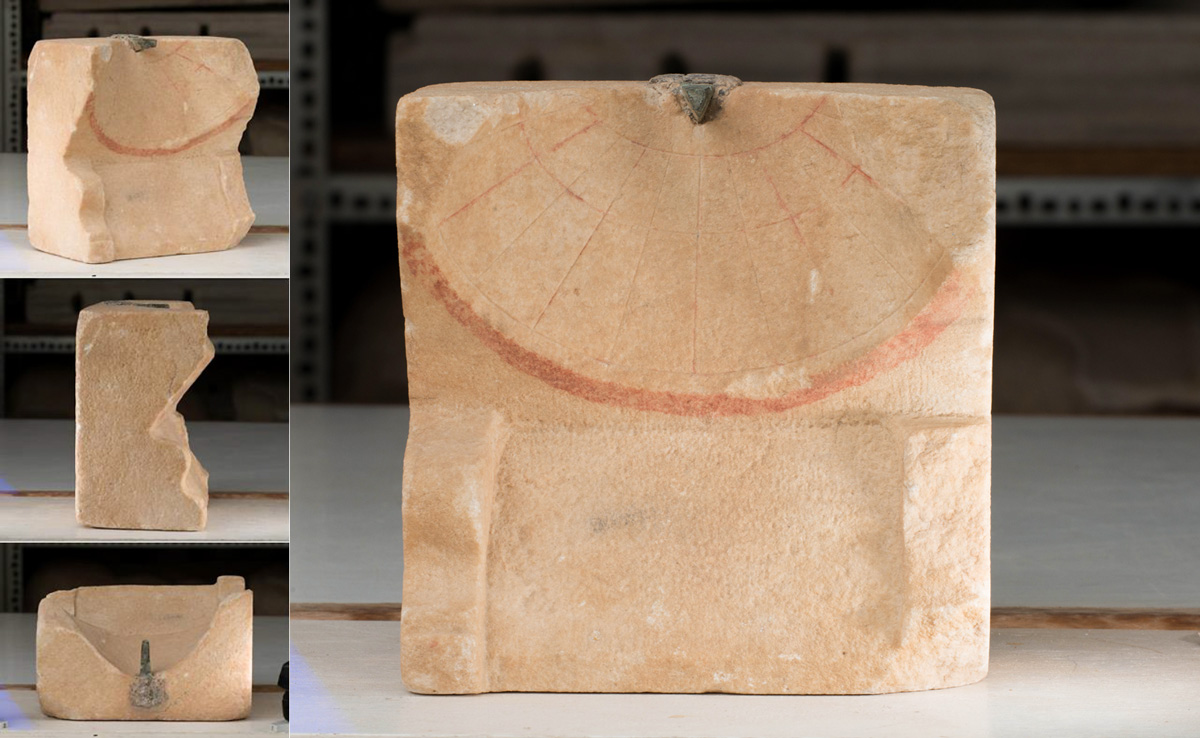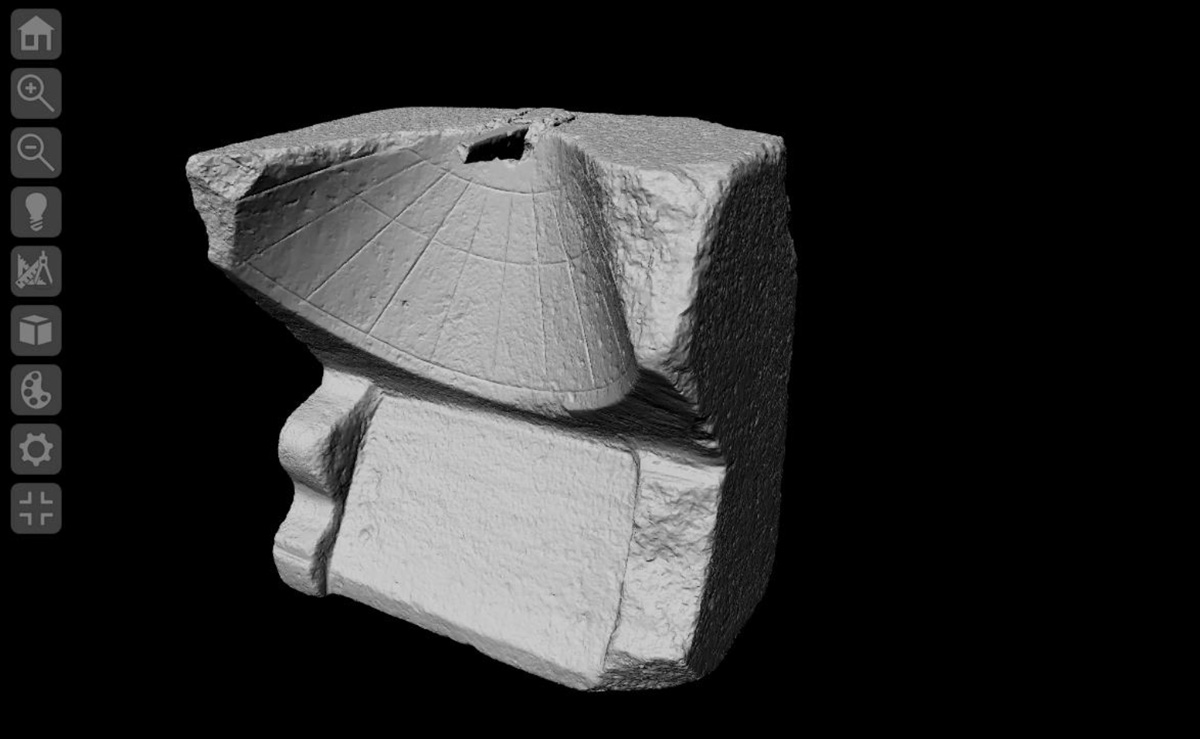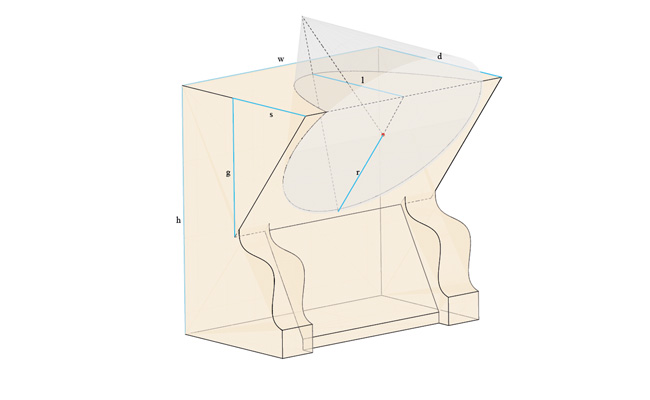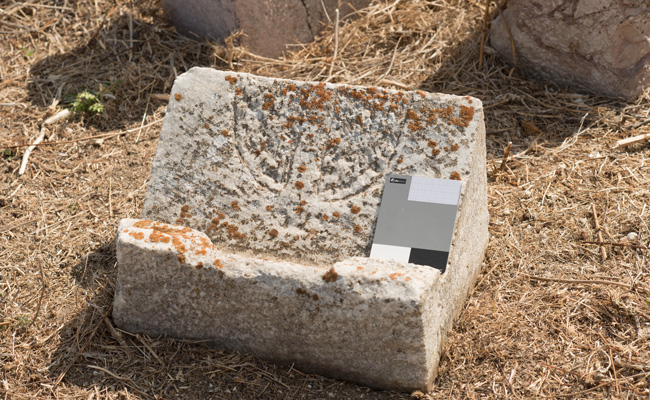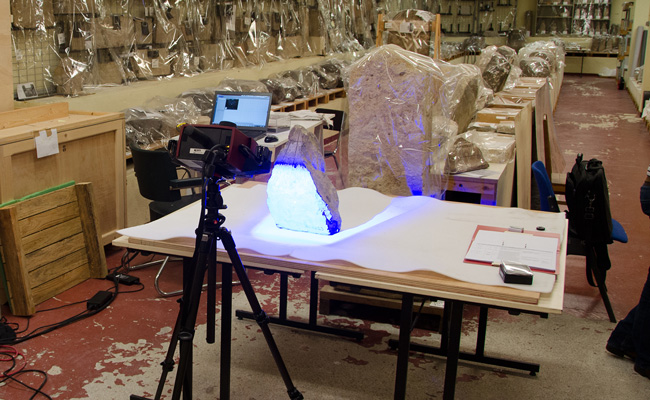The project focused on ancient Greek and Roman stationary sundials. The key objectives were to identify methods of constructions and factors that determined their layouts, and to explore the development and diffusion of the different types in a long time perspective in a changing setting.
Research
Being a technical instrument that is based on astronomical knowledge, sundials are a suitable means for raising the question of the diffusion of knowledge between scientists, technicians, artists, and the users of those instruments. A special focus was set on the role of advanced geometrical topics in the production of sundials.
Foundations
Throughout the Mediterranean region, in France and in the areas along the Nile, we find sundials mainly from the time of ancient Rome. The remaining objects form the basis of our research. In a survey based on information given in archaeological publications we were able to compile an inventory of about 640 artefacts spread over the whole region. The information on several unpublished objects has been contributed by Karlheinz Schaldach. In several campaigns we studied about 30% of those objects in museums and collections. As a direct result of our campaign we were able to relocate a formerly lost sundial that – contrary to all other preserved objects – had not been finished and by this gives a more direct insight into one step of the process of making a sundial.
Elisabeth Rinner, Bernhard Fritsch and Gerd Graßhoff, “Die unvollendete Sonnenuhr von der Agora der Italiker auf Delos”, in: eTopoi. Journal for Ancient Studies, Volume 2 (2012/2013) (2013), 111-130.
Data Collection
Meeting the demands of scientific practice in a project that is focused on geometric properties of a large number of objects makes it inevitable to reconsider the options for doing so. The establishment of a reliable data basis and its accessibility form a special demand, which we approached by digitizing the remaining artefacts as a basis for all further analyses. Besides photos, we produced high precision 3D-models of the sundials. Since it is only possible to use a 3D-scanner in suitable settings, we used structure-from-motion methods as a second technique for creating the 3D-data. The differences between the results of both approaches have been analyzed:
Bernhard Fritsch, Elisabeth Rinner and Gerd Graßhoff, “3D Models of Ancient Sundials: A Comparison”, in: International Journal of Heritage in the Digital Era, Volume 2, Nr 3 (2013), 361–373
→ Doi: 10.1260/2047-4970.2.3.361
Photos and 3D-models have been produced in a series of campaigns in Italy, Greece, France, Turkey and Germany. In addition, several museums and other researchers contributed their own photos and 3D-data. All in all, we were able to assemble a corpus of 3D-models and photos of more than a third of the known objects.
The catalogue and the collections of photos and 3D-models have been used as a pilot scheme for the development of the digital infrastructure within the framework of the Topoi digital publication project that aims at providing a platform for the publication of digital research content. Finally, our material has been made accessible in an online publication as a “Collection” on the research platform Edition Topoi.
Typology
Almost all scholars of ancient sundials use a typology of the objects that in most cases is based on technical aspects such as the shadow-receiving surface, but in other cases discerns between types using the layout of the whole instrument. Such an inconsistent typology cannot describe the variability of combinations of different components in a sufficient and clear way.
A new uniform typology is proposed. It can be seen that in sundials, a type of the corpus that might consist of several elements is combined with a shadow-receiving surface, on which a network of lines indicating the hours can be found. The attributes of the characteristic properties such as the shape of the corpus, the form of the shadow-receiving surface, the operational principle of the sundial, the network of lines and inscriptions of the dial as well as the ornamentation of the objects have been recorded. Thanks to the 3D-models, we were able to identify a number of formerly unknown types of shadow-receiving surfaces. This enabled us to correct the classification of the shadow-receiving surface for a large number of objects.
There are some combinations of properties of the components that are used for large groups of objects, while for others no example is known, and we find a huge number of objects with individual solutions for the shaping of the corpus in combination with one of the more common types of the shadow-receiving surface. Despite the plurality of corpus shapes in the latter group, we can observe a highly standardized design for each component. Local and temporal preferences can be observed as well.
Reconstructing the knowledge of the concepts of sundial types
In the light of the geometrical astronomical model of the movement of the sun during each day and throughout the course of the year, the problem of planning the concept of a sundial might look as a geometrical problem that has to be solved. A main focus of the project is set on the question of the knowledge on which the objects are based, the organization of this knowledge, and the conceptual changes in the instruments in a long time perspective. In order to reconstruct the concepts of different types of sundials and by this getting access to the ancient knowledge and understanding of the problem we analyze – based on the 3D-models – the process of fabrication. This provides insight into the factors that determine the layouts of the objects.
There are several factors that have to be considered in the process of building a sundial. In our analyses we were able to identify a method for taking account of the variation of the geographical latitude in the most common type of the corpus in an appropriate way.
In addition, it has been shown that elementary properties of conic sections are used in the making of conical sundials. In this type, their usage does not relate to the shadow of the gnomon. They are solely used for shaping the conical shadow-receiving surface. Besides showing the tight connection of the concept of this type to advanced geometrical concepts, the result also shows that we can consider a broad knowledge of basic understanding of elementary properties of such curved lines. These results have been discussed in a Topoi workshop on the Ancient theory of conic sections by Stephen Menn and Jonathan Beere.
All in all, it can be shown that the objects are determined by know-how that is codified in procedures. The latter use rules in order to regulate the forms of the objects. This procedural knowledge serves as a starting point for analyzing the diffusion of knowledge and modelling the process of innovation.
The newly identified types of shadow-receiving surfaces also show the close connection to advanced topics of Greek geometry. All in all, geometry plays a crucial role for parts of sundials that are up to the choice of its developer and do not have to satisfy any requirements that come from the astronomical model of the movement of the sun.
As already observed by other researchers, there are deviations towards exact solutions of the problem of finding a layout of a sundial in many types, but as the analysis has shown, almost all of them still provide a sophisticated account for doing so. In many cases, they can be seen as simplifications to exact solutions, based on a deep understanding of the geometrical situation. A publication on the role of geometry in the development of sundials for their planning and shaping is currently in preparation.
Methodological aspects of the reconstruction of knowledge that contribute to the objects and to establish regularity patterns as effects of the usage of rules for building objects have been presented at the annual conference of Topoi “Wissen – Topoi Jahrestagung 2013“.
Several aspects of the geometrical features of ancient sundials were presented to a broader audience at the Planetarium by Elisabeth Rinner.
Changes and Developments
Changes and developments also emerge with regard to the context of the usage and usability of sundials. Sources on this subject have been collected and analyzed by Karlheinz Schaldach with a focus on the changing cultural and historical settings. A publication of the results, the collection of sources, and a catalogue of sundials from the Greek Islands that comprises several objects not publicized until now, will be published in 2019.

